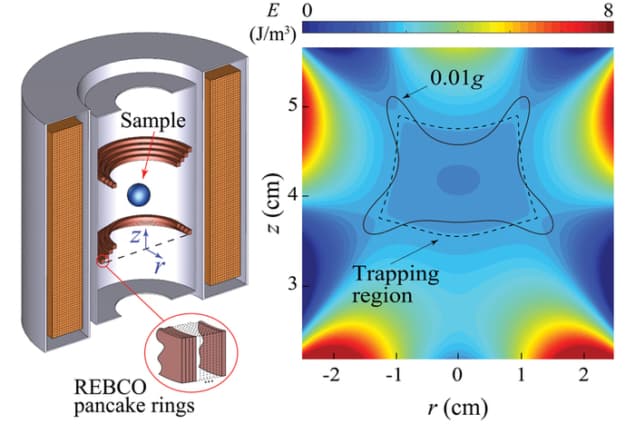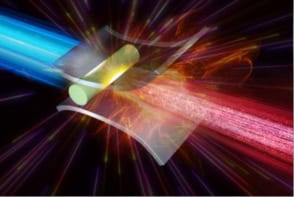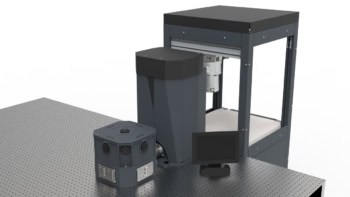
A new device that uses magnetic levitation to emulate the reduced gravities found on celestial bodies such as the Moon and Mars is 1000 times larger by volume than previous systems of its kind, paving the way for more complex Earth-based tests of low-gravity environments – including growing small plants in simulated microgravity. The new simulator, which was developed at the National High Magnetic Field Laboratory (NHMFL) at Florida State University in the US, will also enable researchers to perform a variety of physics, medical and biology experiments with a view towards future space missions.
Reduced gravity affects biological organisms in many ways. It is known to inhibit cell growth, and can also cause other forms of cellular stress, leading to loss of bone and muscle mass in ways that are detrimental to astronauts’ health. In physical systems, it can affect bubble cavitation, heat transfer in fluids and the sloshing dynamics of cryogenic propellants in spacecraft. In materials research, effects of reduced gravity include changes to the way crystals grow and alloys form.
Ground-based gravity tests
The best way to find out how microgravity will affect a given system is, of course, to send it into space. Such experiments are expensive, however, and must be conducted by astronauts rather than scientists trained in that specific discipline, which limits the types of tests possible. Researchers have therefore developed several ground-based devices that exploit free fall to simulate reduced gravities, including drop towers, aircraft in parabolic flight and suborbital rockets. While useful for many types of experiment, these devices maintain low gravity for a few minutes at best, making them unsuitable for tasks that require long observation times.
Magnetic levitation-based simulators (MLS) are an alternative approach, and researchers have already used them to levitate living organisms without causing them harm. Compared to other low-gravity simulators, researchers at the FAMU-FSU College of Engineering and the NHMFL say that MLSs are cheaper, allow the exact strength of gravity to be adjusted, and offer practically unlimited operating times. The snag is that a conventional MLS can only create low gravity over a small volume. Indeed, when the simulator mimics an environment with about 1% of Earth’s gravity, g, the functional volume is only a few microlitres, which is too small for practical experiments.
Unprecedented functional volume
Researchers led by Wei Guo overcame this problem by adapting the magnet to generate a uniform levitation force that balanced the gravitational force over a much larger volume. They did this by placing a so-called gradient-field Maxwell coil (a configuration first put forward by physicist James Clark Maxwell in the 1800s for producing uniform field gradients) in the 120 mm-bore of a superconducting magnet.
The technique produced an unprecedented functional volume of over 4000 microlitres in a compact coil with a diameter of just 8 cm, explains team member Hamid Sanavandi. When the current in the MLS is reduced to emulate the gravity on Mars, which is 0.38 g, the functional volume can be greater than 20,000 microlitres, or about 20 cm3. Another advantage is that the MLS can be fabricated using existing high-temperature superconducting materials known as rare-earth barium copper oxide (REBCO), he adds.

Take off for partial gravity rehabilitation project
“The fact that our MLS design offers a functional volume about three orders of magnitude larger than that for conventional solenoid MLSs makes it a potential game-changer in the low-gravity research field,” Guo says. “When this MLS design is used to emulate reduced gravities in extra-terrestrial environments, such as on the Moon or Mars, the resulting functional volume is large enough to accommodate even small plants, making this an exciting tool for medical and biology research.”
Looking ahead, the researchers, who report their work in NPJ Microgravity, say they now plan to further optimize their design by using artificial-intelligence-aided optimization methods. “We will also be securing funds to fabricate the MLS we have designed for experimental testing,” Guo tells Physics World.



